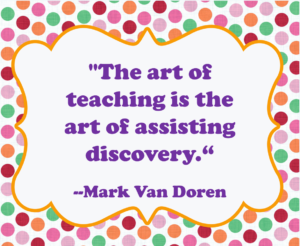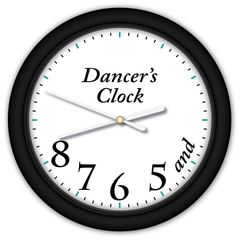I have been to my fair share of bad classes (haven’t we all) and it’s particularly infuriating to have paid your valuable mulah to take part, only to realise five minutes in that you could probably teach the class better yourself.
In a bid to feel useful, here are my top ten tips for how to plan a class (particularly an open, adult class; but most of the points are transferable to a number of settings). Here goes:
- The first thing to do is speak to your class. Introduce yourself, the theme of the session, what you’ll be doing and so on. A group of people in the know will be much more confident than if they have no idea of what they’ll be doing for the next hour. Always take time to talk.
- Never, never, never do static stretches at the start of a class. This is dance 101 but you’d be surprised how many times I’ve walked into a studio to be told to start stretching straight away. Do you want to injure people? I should sincerely hope not.
- Create the right vibe for the movement you’re about to explore. This can be done by your choice of music, providing context for the genre (see point one) and the way you use your voice. E.g, nobody will be able to embody the Dancehall energy if you put on latin music, use a soothing voice, ask us to stretch straight away and get us to do generic cardio as a way to warm up. Which leads me nicely on to point four…
- Always introduce key movements that you plan to use later on in the session, in the warm up. This will give your participants the opportunity to become familiar with movements ahead of time and reaffirms the confidence mentioned in point one. It’s also a good way for you to see how many in the group find your movements challenging in comparison to those who seem really comfortable with them.

Remember what it’s all about
- Part I:
No matter how your class is advertised, you will always have people of mixed abilities in the studio with you. Using descriptive language (similes, metaphors, adjectives) is a key tool to make your movements accessible to a range of abilities. If you can describe how a step should feel, or can liken it to a specific environment (e.g moving underwater) or sensation (e.g as if you have no bones in your body) it gives your participants something to visualise to help them make sense of your movement in their own body. You can only get so much from watching someone else demonstrate.
Part II:
To accommodate further, always have simplified versions of your steps ready to pull out – particularly if you have movements that are fast, complicated or require a high level of strength or flexibility. Not everyone in the room will be able to execute your advanced choreography and they should not be made to feel bad because of it. (The other side of this is to also ensure you have a more progressive version of your steps to take into account those who may be highly-trained). - Leading on from this, to ensure everyone feels valued and as though they are doing a good job (which they will be!), each time you run the routine/sequence with the group, dance the advanced version(s) and then the standard version with them. Also avoid using the word ‘easy’. Though it can be reassuring for some, it can be de-motivating for others – use ‘standard’ or ‘original’ and ‘advanced’ to differentiate.

Keep an eye on the time
- Keep an eye on the time. As ridiculous as this sounds, I am sure we’ve all been there when a teacher spends 40 mins on one section of a routine and then tries to teach the same amount of new material in the last 10 mins in order to ‘finish it off’. Or worse, leaves only 5 mins in which you are expected to choreograph the next 16 counts yourself. No no no no no. Instead…
- Don’t be afraid to deviate from your lesson plan. If it takes 40mins for a group to learn five movements then leave it at that. Don’t rush them and try to teach your entire choreography because that’s what you said to yourself you’d do. You’ll have a messy group and everyone (including you) will go home feeling frustrated. It’s far better to have a group of confident dancers performing 30 seconds of movement really well, than having a group of intimidated and confused dancers muddling their way through two minutes of material. If the creative element is a really important aspect to your class, introduce the task early on in the session. If they finish it with plenty of time, go back to teaching your choreography. Know your group, give them time and listen to them.

Don’t single people out
- PART I:
Don’t single people out/don’t use negative reinforcement. Unless you are injured and cannot physically demonstrate a movement, don’t ask the group to watch one of the participants as an example of what to do. Though it may feel uplifting to that one individual to be singled out in a positive way, the rest of the group may feel a) resentful that they won’t chosen or b) disengaged because they’re not interested in a ‘who does it best’ contest.
Dance class is not bootcamp
PART II:
Equally, if a group aren’t picking up your movement, don’t make them drop and give you twenty. This actually happened in an open class I was in. Seriously. There are a number of problems with this but the main two are a) unless your class is part of an intensive training programme/academy, this level of discipline is not necessary and b) this method of teaching is really excluding – what if your participants can’t physically do a press-up/sit-up/squat jump or whatever it is you’re making them do? Not only will they feel rubbish that they can’t do your movements properly (which they signed up to try), now they feel even worse because you’ve highlighted that ‘deficiency’ and given them another thing that they ‘can’t do’ that they did not sign up for. Your class is not a bootcamp or a detention centre, always be open and positive and you will get the best results. If they’re not getting all of your choreography, go back to point eight.
Natter natter natter
- Stick around at the end of your class. Quite often, participants want to have the opportunity to say thank you, ask questions, or generally just talk to you about their experience. Make time for them to do this and they’re more likely to come back next week.
These are my top ten tips for planning a dance class!
The key thing to remember is that these people have paid to learn from you and should feel glad to be there. This isn’t a showcase, no-one has signed up to take a class just to watch the teacher demonstrate or show off over and over again. They are there to learn.
Dance, of course, is centred around the body and people’s individual body image’s are complex things. In a dance class, you are asking people to move their bodies in new or unusual ways and you should always make space and time for them to do this in a positive and friendly environment. Confidence isn’t built by tearing people down.
Here’s hoping this helps someone out there. In the meantime, off I go to take my next class…wish me luck!